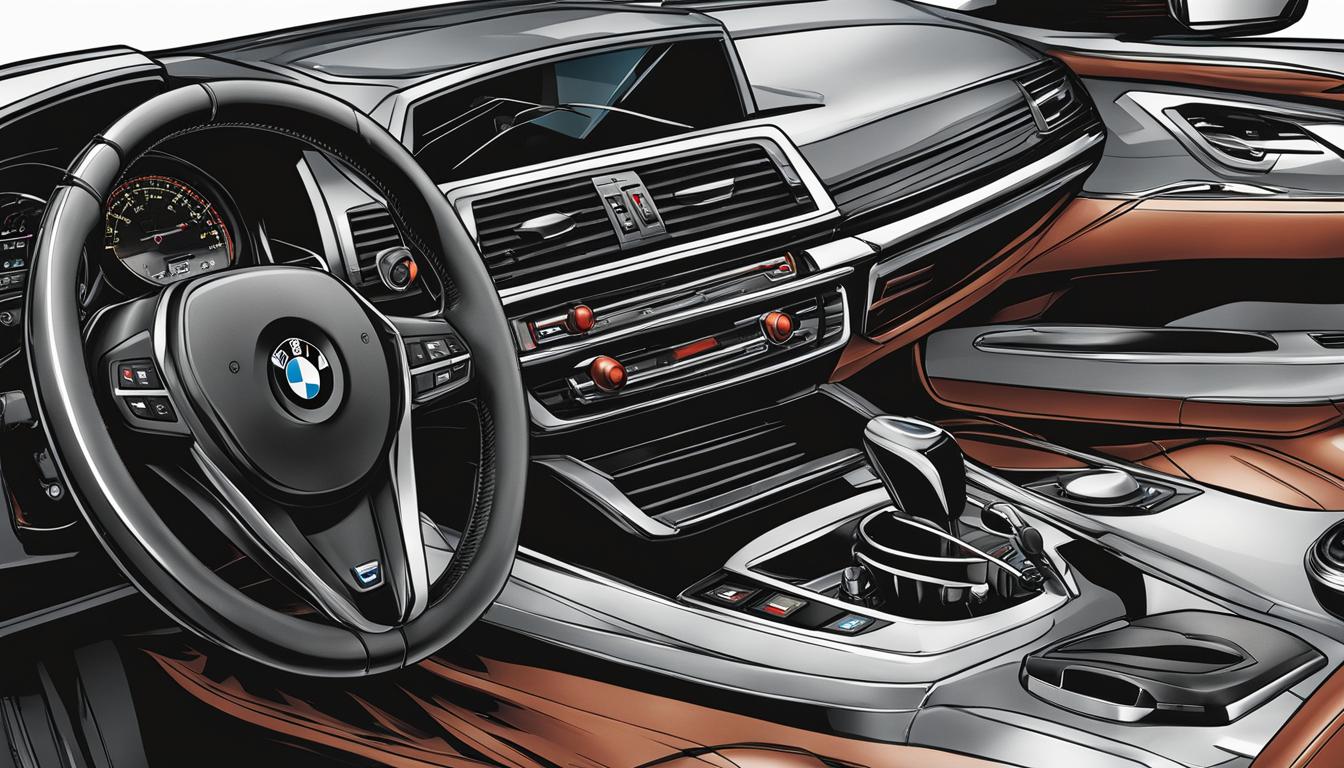If your BMW heater is not blowing hot air, it can be quite frustrating, especially during those cold winter months. However, there are several potential reasons why this may be happening, and in this guide, we’ll help you troubleshoot the problem and find a solution. By addressing these issues, you can regain the warmth and comfort you deserve in your BMW.
- Contaminated coolant can lead to freezing and engine overheating, resulting in a heater that doesn’t work properly.
- A faulty heater core, with signs like coolant leaks or a sweet-smelling scent, can decrease coolant flow and prevent hot air from reaching the cabin.
- Malfunctioning thermostats disrupt coolant flow, leading to a decrease in engine performance and an ineffective heater.
- An inoperative blower fan can cause a lack of airflow and result in no hot air being blown into the cabin.
- Ensuring proper coolant levels and bleeding the system can help remove air pockets and restore fluid circulation for optimal heating.
Now that we have an overview, let’s dive deeper into each potential cause of a BMW heater not blowing hot air and explore how to address them.
Contaminated Coolant
One of the possible causes for a BMW heater not blowing hot air is contaminated coolant. Engine coolant plays a crucial role in maintaining the proper temperature of the engine, preventing it from overheating or freezing. However, over time, contaminants can enter the cooling system and affect the coolant’s effectiveness. This can lead to an overheating engine and a heater that doesn’t work as expected.
To prevent this issue, it is important to regularly check the coolant quality and level. Contaminated coolant may have debris, rust, or other foreign substances that hinder its ability to transfer heat effectively. If you notice any signs of contamination, such as a discolored coolant or particles floating in the reservoir, it’s advisable to flush and replace the coolant to restore optimal performance.
Besides contamination, frozen coolant can also contribute to the problem. In colder climates, if the coolant mixture isn’t properly balanced with antifreeze, it can freeze and cause blockages in the cooling system. This can lead to an overheating engine and ultimately result in a malfunctioning heater. If you suspect frozen coolant, it is recommended to have the cooling system inspected and adjusted accordingly.
Table: Signs of Contaminated Coolant
| Sign | Description |
|---|---|
| Discolored Coolant | Presence of rust, debris, or discoloration in the coolant |
| Particles in Reservoir | Visible debris or sediment floating in the coolant reservoir |
| Overheating Engine | Engine temperature rises quickly and consistently |
| Heater Not Working | Lack of hot air flow from the heater |
Faulty Heater Core
A faulty heater core can be one of the culprits behind your BMW’s heater not blowing hot air. The heater core is responsible for transferring heat from the coolant into the cabin, but if it becomes clogged or develops leaks, it can hinder the proper flow of coolant and result in a lack of hot air. Keep an eye out for signs such as a sweet-smelling scent, fogged-up windows, or coolant leaks under the dashboard or on the floorboard.
If you suspect a faulty heater core, it’s advisable to have it inspected and repaired by a professional mechanic. They will be able to assess the extent of the damage and determine whether a repair or replacement is necessary. Resolving the issues with the heater core should restore the proper flow of heat into the cabin and help your BMW’s heater blow hot air again.
To prevent future issues with the heater core, regular maintenance of your BMW’s cooling system is crucial. This includes flushing and replacing the coolant at recommended intervals to prevent contamination and clogging. Additionally, be mindful of any signs of coolant leaks or unusual smells, as these can indicate problems with the heater core or other components of the cooling system.
Common Symptoms of a Faulty Heater Core:
- Sweet-smelling scent in the cabin
- Fogged-up windows, especially when the heater is on
- Coolant leaks under the dashboard or on the floorboard
- Insufficient heat coming from the vents
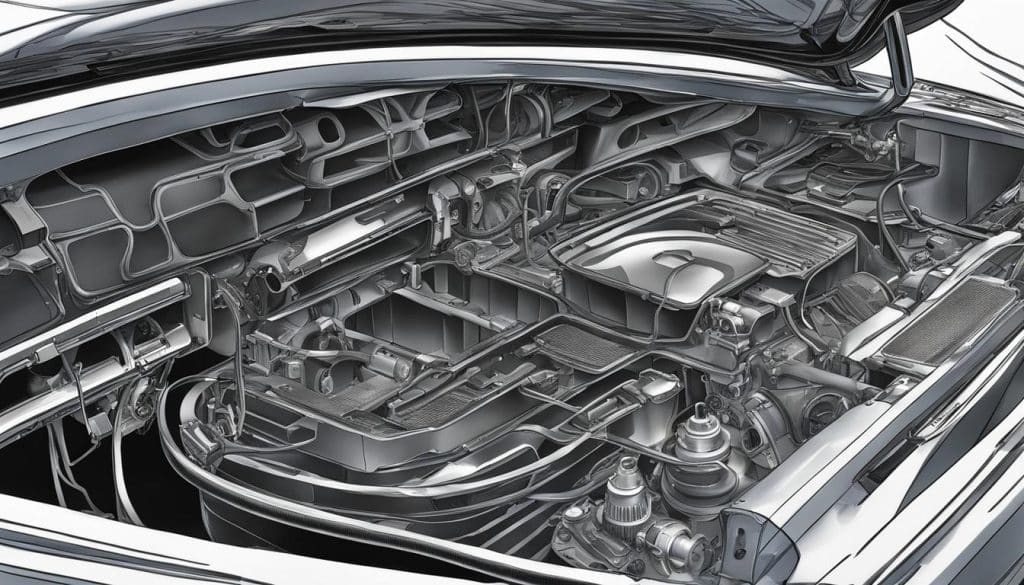
| Issue | Possible Causes | Symptoms |
|---|---|---|
| Faulty Heater Core | Clogged tubes, coolant leaks | Sweet-smelling scent, fogged-up windows |
| Contaminated Coolant | Frozen coolant, overheating engine | Heater not working |
| Malfunctioning Thermostat | Stuck open or closed | Decrease in performance |
| Inoperative Blower Fan | Lack of airflow, blown fuse | Lack of hot air |
| Air in the System | Fluid circulation issues | Heater not blowing hot air |
| Heater Control Valve | Seal deterioration, gunked up solenoid pistons | Lack of proper heating |
| Low Coolant Level | Air pockets in the system | Heater not functioning correctly |
Malfunctioning Thermostat
If your BMW heater is not blowing hot air, one of the possible culprits could be a malfunctioning thermostat. The thermostat plays a crucial role in regulating the flow of coolant to the engine and radiator, ensuring efficient engine temperature control. However, when the thermostat becomes damaged or gets stuck open or closed, it disrupts the proper coolant flow, leading to heating issues in your vehicle.
A thermostat that is stuck open can result in the engine taking longer to reach its optimum operating temperature. This, in turn, affects the heat output from the heater. Conversely, if the thermostat is stuck closed, it restricts the flow of coolant to the heater core, preventing the warm air from being circulated into the cabin. To determine if your thermostat is malfunctioning, you can monitor the engine temperature gauge on your dashboard. If the gauge remains at the cold end for an extended period or consistently shows overheating, it could indicate a faulty thermostat.
Checking and Replacing the Thermostat
If you suspect that your thermostat is causing the heater issue, it’s essential to have it checked and replaced if necessary. Consulting a professional auto mechanic is recommended for an accurate diagnosis and proper installation of a new thermostat. They will have the expertise to test the thermostat’s functionality and determine if a replacement is required. Remember, addressing a malfunctioning thermostat promptly can help restore the proper flow of coolant, ensuring your BMW’s heater functions optimally.
| Signs of a Malfunctioning Thermostat | Recommended Steps |
|---|---|
| Engine temperature gauge remains at the cold end for an extended period | Consult a professional auto mechanic to diagnose and replace the thermostat if needed |
| Engine consistently shows overheating | Have the thermostat inspected by a qualified mechanic to determine if it requires replacement |
| Insufficient heat output from the heater | Get the thermostat checked by a professional to ensure proper coolant flow |
By addressing a malfunctioning thermostat promptly, you can help restore proper coolant flow and ensure that your BMW’s heater works effectively. Remember, it’s always best to seek the expertise of a professional auto mechanic to diagnose and resolve any issues with your vehicle’s heating system.
Inoperative Blower Fan
If your BMW’s heater is not blowing hot air, one possible culprit could be an inoperative blower fan. This component is responsible for ventilating warm air from the heater core into the cabin of your vehicle. When the blower fan is not working correctly, you may experience a lack of airflow from the vents, resulting in a heater that doesn’t produce hot air as desired.
There are a few potential reasons why the blower fan may be inoperative. One possibility is a blown fuse. If the fuse that controls the blower fan has blown, it will need to be replaced. Additionally, damaged components within the blower fan assembly, such as a faulty motor or wiring, can also cause the fan to malfunction.
To diagnose and address the issue with the inoperative blower fan, it is recommended to consult a professional auto mechanic who has experience with BMW vehicles. They will be able to inspect the system, identify the root cause of the problem, and carry out any necessary repairs or replacements to get your heater blowing hot air again.
| Possible Causes of an Inoperative Blower Fan | Potential Solutions |
|---|---|
| Blown fuse | Replace the blown fuse with a new one |
| Damage to blower fan components | Inspect and repair or replace damaged components |
Summary:
- An inoperative blower fan can cause your BMW’s heater to not blow hot air.
- Possible causes include a blown fuse or damaged components within the blower fan assembly.
- Consult a professional auto mechanic to diagnose and address the issue.
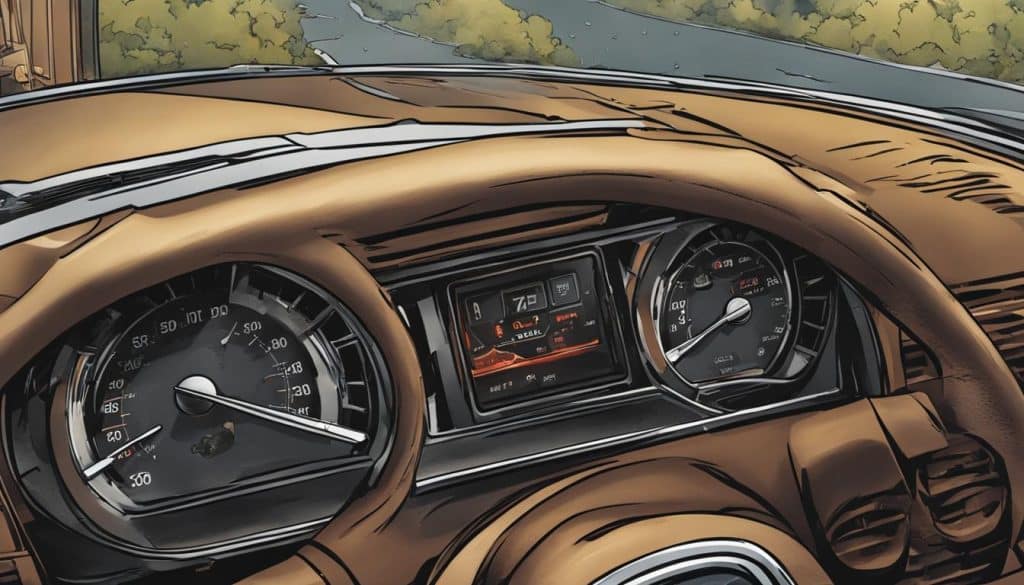
Air in the System
When your BMW heater is not blowing hot air, one possible culprit could be the presence of air in the cooling system. Air pockets can disrupt the circulation of fluid through the heater core, preventing it from heating up properly. This can result in a lack of hot air blowing into the cabin.
To resolve this issue, it’s important to bleed the cooling system and ensure that the coolant level is sufficient. Bleeding the system involves releasing any trapped air and allowing the coolant to flow smoothly. Ensure that the coolant reservoir is filled to the recommended level and follow the manufacturer’s instructions for bleeding the system.
By removing the air from the system and ensuring proper fluid circulation, you can restore the functionality of your BMW heater. If you’re not comfortable performing these steps yourself, it’s always advisable to consult a professional auto mechanic for assistance.
| Steps to Address Air in the System |
|---|
| 1. Park your BMW on a flat surface and turn off the engine. Allow it to cool down before proceeding. |
| 2. Open the hood and locate the coolant reservoir. Check the coolant level and ensure it is within the recommended range. |
| 3. If the coolant level is low, add the appropriate coolant mixture to bring it up to the recommended level. |
| 4. Follow the manufacturer’s instructions to bleed the cooling system. This typically involves opening a bleeder valve or loosening a hose clamp to allow any trapped air to escape. |
| 5. Once the air has been released, close the bleeder valve or tighten the hose clamp securely. |
| 6. Start the engine and let it run for a few minutes to ensure that the coolant is circulating properly. |
| 7. Check the heater to see if hot air is now blowing. If not, repeat the bleeding process as necessary. |
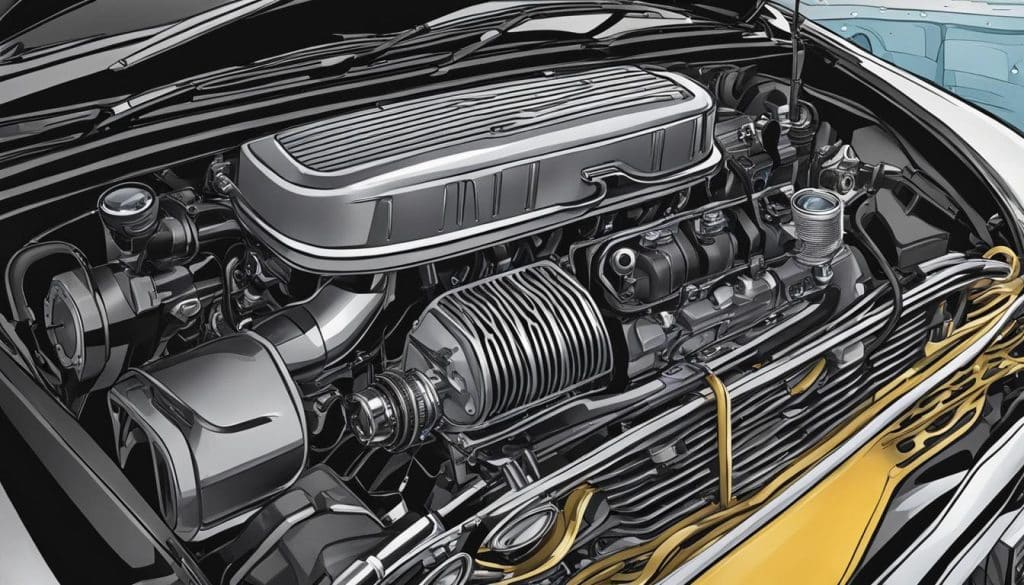
Heater Control Valve: A Potential Culprit for BMW Heater Issues
If your BMW heater is not blowing hot air and you’ve ruled out other common causes, it’s time to take a closer look at the heater control valve. This component plays a crucial role in regulating the flow of hot coolant to the heater core, which then warms up the air that is blown into the cabin. However, a faulty heater control valve can disrupt this process and leave you with a less-than-ideal heating experience.
The heater control valve is equipped with rubber gasket seals that can deteriorate over time, causing leaks and leading to a loss of proper heating. When these seals wear out, coolant may escape or flow inconsistently, resulting in insufficient heat being transferred to the cabin. If you suspect a faulty heater control valve, it’s important to have it replaced to restore optimal heating in your BMW.
Common Issues with Heater Control Valves
- Leaking coolant: Damaged rubber gasket seals can allow coolant to leak out, reducing the amount of hot coolant available for heating the air.
- Insufficient heat: When a heater control valve fails to function correctly, it may restrict or obstruct the flow of coolant, resulting in inadequate heat being produced.
- Inconsistent heating: A malfunctioning heater control valve can lead to inconsistent heating, with fluctuations in the temperature of the air blown into the cabin.
If you’re experiencing any of these issues, it’s advisable to have your heater control valve inspected and replaced if necessary. A qualified auto mechanic can diagnose the problem and ensure a proper replacement is installed to restore the heating functionality in your BMW.
| Heater Control Valve Replacement Process | Cost Range |
|---|---|
| Inspection and diagnosis of heater control valve | $50 – $100 |
| Replacement of heater control valve | $150 – $400 |
| Labor costs | $100 – $200 |
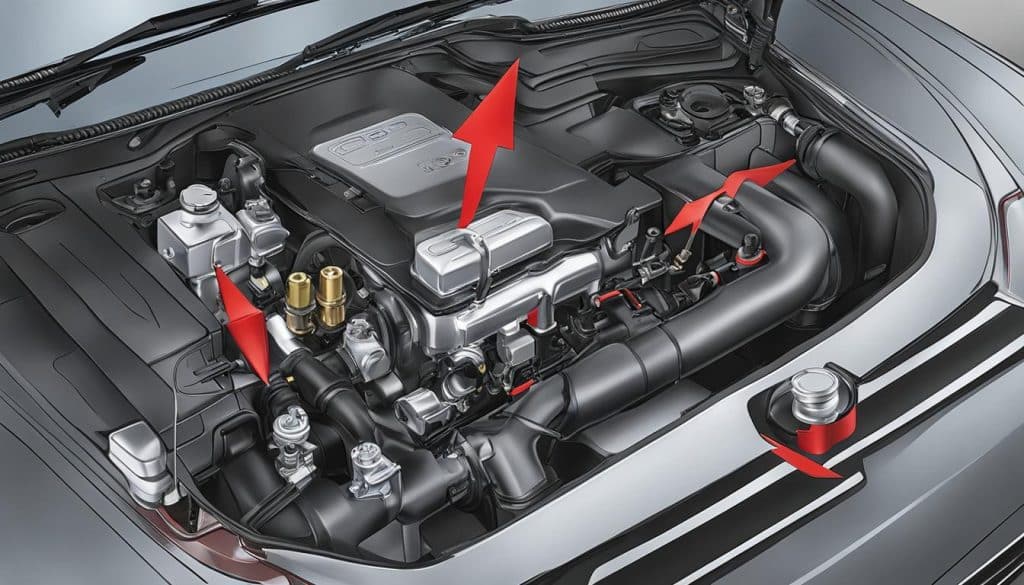
Check Coolant Level
One of the first things you should do if your BMW heater is not blowing hot air is to check the coolant level. A low coolant level can result in air pockets forming in the system, leading to improper heating. To check the coolant level, locate the coolant reservoir tank in your BMW’s engine bay. The tank is usually translucent and has “minimum” and “maximum” markings on the side. Ensure that the coolant level is between these marks. If the level is low, you can top it up with a 50/50 mixture of coolant and water. However, if you consistently notice a low coolant level, it may indicate a larger issue that requires further investigation.
System Check
In addition to checking the coolant level, it’s important to perform a thorough system check to identify any potential issues. Start by inspecting the hoses and connections for any visible leaks or damage. Look for signs of coolant leaks, such as wet spots or a sweet smell, both inside the cabin and under the dashboard. You should also examine the radiator and heater core for any clogs or obstructions that may be restricting the flow of coolant. If you find any abnormalities during the system check, it’s recommended to consult a professional mechanic for further diagnosis and repair.
Bleeding the System
If you’ve determined that there are air pockets in your BMW’s cooling system, it’s crucial to bleed the system to remove them. Air pockets can disrupt the flow of coolant to the heater core, resulting in reduced heating effectiveness. Bleeding the system involves releasing trapped air by opening the bleeder valve located on the radiator or hoses. Consult your BMW’s owner’s manual or seek guidance from a qualified mechanic on the proper procedure for bleeding the cooling system in your specific model. This will help ensure that the air pockets are eliminated and that the coolant flows smoothly throughout the system, restoring proper heating to your BMW.
| Steps to Check Coolant Level, Perform System Check, and Bleed the System | |
|---|---|
| Step 1 | Allow the engine to cool completely before starting any checks or maintenance. |
| Step 2 | Open the BMW’s hood and locate the coolant reservoir tank. |
| Step 3 | Check that the coolant level is between the “minimum” and “maximum” markings on the tank. |
| Step 4 | If the coolant level is low, add a 50/50 mixture of coolant and water to bring it to the proper level. |
| Step 5 | Inspect the hoses, connections, radiator, and heater core for any leaks, damage, or obstructions. |
| Step 6 | If you notice any abnormalities, consult a professional mechanic for further diagnosis and repair. |
| Step 7 | Refer to your BMW’s owner’s manual or seek guidance on the proper procedure for bleeding the cooling system. |
| Step 8 | Follow the recommended steps to bleed the system and remove any air pockets. |
| Step 9 | Once the system is properly bled, ensure that the coolant flows smoothly throughout the system. |
| Step 10 | Test your BMW’s heater to ensure it is now blowing hot air effectively. |
Conclusion
Troubleshooting your BMW heater issues is crucial if your heater is not functioning correctly and not providing hot air. By identifying potential culprits, you can take steps towards resolving the problem.
If you’re faced with contaminated coolant, regular maintenance and maintaining proper coolant levels can prevent freezing and overheating issues that affect the heater’s performance. On the other hand, a faulty heater core may result in sweet-smelling scents, fogged-up windows, or coolant leaks, indicating the need for repair or replacement.
Additionally, a malfunctioning thermostat can disrupt coolant flow, causing the engine to struggle with reaching its ideal temperature and affecting the heater’s ability to provide warm air. Also, checking and replacing the thermostat can help restore proper functionality. Similarly, an inoperative blower fan can result in a lack of airflow and insufficient heating. To resolve this, check for blown fuses or damaged components.
Remember, air pockets in the cooling system and a failed heater control valve can also impact the heater’s performance. So, bleeding the system to remove air and replacing the valve can help restore proper heating. If you’re unsure about diagnosing or resolving the issue, seeking the assistance of a professional auto mechanic is advisable. Stay comfortable and warm on the road with a properly functioning BMW heater!.
